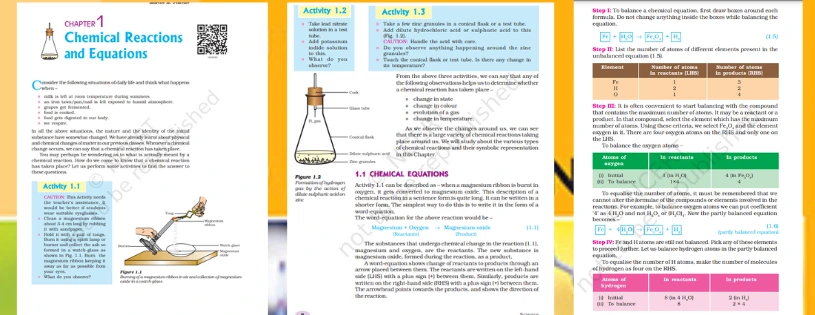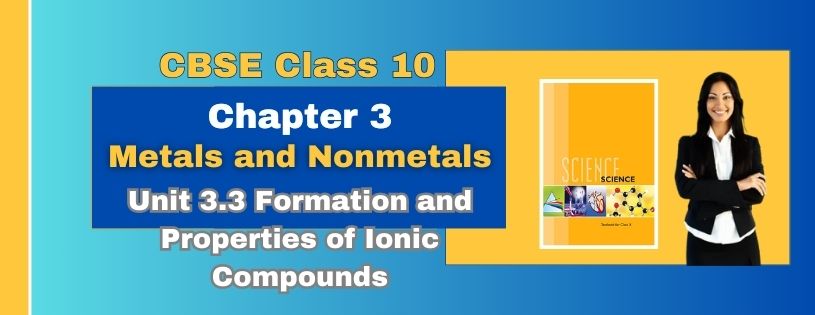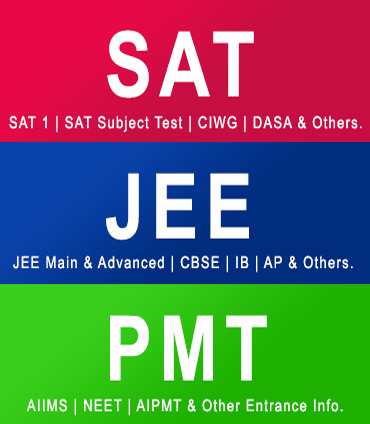CBSE Class 10th Formation and Properties of Ionic Compounds & Preparations Downloads
What occurs when metals and non-metals react may be on your mind. Ionic chemicals are created when they establish ionic bonds. An electrical force of attraction between two atoms with opposing charges is known as an ionic bond. An electron is transferred from a metal to a non-metal to form an ionic connection. Between cations and anions, an ionic connection forms.
Cations have a positive charge, whereas anions are negative-charged ions. We will cover all of the vocabulary and ideas related to ionic compounds, so don't worry if you don't know them. This page will teach you about the ionic compound, including its production, structure, and often asked questions.
What is an Ionic Compound?
You have to understand that every atom has a certain number of protons, neutrons, and electrons, making it unique. An atom is typically equal to the number of protons and electrons. An atom's proton count never varies, as doing so would result in the atom becoming a completely new element. An atom's electron count, however, is subject to vary.
Thus, an ion might result from an atom gaining or losing an electron. The addition or removal of one electron from an atom modifies its charge since the electrons already have a net negative charge. It occurs as a result of the electron count becoming out of phase with the positively charged protons.
In the case of ions, it is true that opposites attract. Ionic compounds are made up of opposing charges—positive and negative—holding each other together through ionic bonds. It is only an ion-based molecule, as the name would imply. One atom's gain or loss is equal to the other's gain or loss. Thus, the atom forms a pair with the atom that requires its electron donated by the other atom.
Ions can be thought of as a two-bar magnet. The north and south ends of the various magnets resist one another when you try to connect them together. However, if you rotate one of the magnets, the north end and the sound end will come together quickly. Ions behave similarly; an ionic compound is created when two positive and one negative ion combine.
Sodium Chloride, also generally known as common salt, is a well-known ionic compound.

Cation
A cation has a net positive charge because there are fewer electrons than protons in it. An element must lose one or more electrons in order to form a cation, and these electrons may be drawn by an element with a great affinity for them. A cation is indicated by the symbol '+'. Mg₂⁺, for instance
Anion
An anion is a particle with a net negative charge because it has more electrons than protons. An element must acquire one or more electrons in order to form an anion; these electrons might be lost by an element with a lower affinity for them. A cation is indicated by the symbol '-'. O₂⁺ is one example.
Properties of the Ionic Compound
Physical Properties: Because positive and negative ions are strongly attracted to one another, ionic compounds are solid and challenging to break. But when pressure is applied, they fracture, which is why they are fragile.
Melting and Boiling Points: There is a strong affinity between ionic compounds. Thus, a significant amount of energy is needed to break the ionic bonds that hold the atoms together. Ionic compounds have a higher melting and boiling point because of this.
Solubility: Ionic chemicals have the ability to dissolve in polar liquids. Among the polar solvents are formamide, methanol, and water. Moreover, ionic chemicals have a low solubility or no solubility in non-polar solvents such as hydrocarbons and chloroform.
Electric Conductivity: Ionic substances exhibit electrical conductivity when melted, but not when they are solid. You are aware that the transfer of charge from one point to another is a necessary component of electricity conduction.
Ionic substances are not electrically conductive because ions cannot travel when they are solid. Nonetheless, when ionic compounds are melted, the heat generated overcomes their electrostatic forces of attraction, allowing the compounds to conduct electricity.
Ionic Compound Structure
A polar covalent bond's ionic nature is determined by how much charge separation there is. Determining the disparity between the two atoms' electronegativity is helpful.
Δχ = χB - φA
Bond polarity and ionic nature both grow with increasing electronegativity difference.
For instance:
When chlorine and magnesium combine,
Because magnesium contains two electrons in its outermost orbit, it loses those two electrons, or two electrons from the M shell are taken out, making the outermost orbit of the L shell. It therefore creates a stable octet. With just 10 electrons and 12 protons, magnesium now has a positive charge, creating Mg₂⁺.
Comparably, the outermost orbit of chlorine has seven electrons. As a result, Cl now requires one electron to finish its stable octet. From the Mg ion, Cl receives one electron. However, since Cl only requires one electron and Mg has released two, the two Cl atoms unite with one Mg atom in this instance. As a result, Cl generates Cl⁻, a negative charge. This process produces MgCl₂.
Applications of ionic compounds
1. Sodium chloride, or NaCl, is an ingredient in regular tablets.
2. The toothpaste we use to clean our teeth includes sodium fluoride or NaF.
3. A ubiquitous cooking ingredient, sodium bicarbonate, or NaHCO3, is usually used to make cakes, idlis, and other baked foods.
4. Potassium phosphate, or KPO₂, is added to meals.
5. The wood is further preserved with the addition of ionic chemicals. Oxides and boric acid are often utilized.
CBSE Class 10 NCERT Science Topics for a Strong Foundation
| Chapter Name | Metals and Non-metals |
| Topic Number | Topic |
| 3.1 | Properties of Metals and Non-metals |
| 3.2 | Reactivity Series |
| 3.3 | Formation and Properties of Ionic Compounds |
| 3.4 | Basic Metallurgical Processes |
| 3.5 | Corrosion and its Prevention |
List of CBSE Class 10 Science Chapter
| Chapter Number | Chapter Name |
| Chapter 1 | Chemical Reactions and Equations |
| Chapter 2 | Acids, Bases and Salts |
| Chapter 3 | Metals and Non-metals |
| Chapter 4 | Carbon and its Compounds |
| Chapter 5 | Life Processes |
| Chapter 6 | Control and Coordination |
| Chapter 7 | How do Organisms Reproduce? |
| Chapter 8 | Heredity |
| Chapter 9 | Light – Reflection and Refraction |
| Chapter 10 | The Human Eye and the Colourful World |
| Chapter 11 | Electricity |
| Chapter 12 | Magnetic Effects of Electric Current |
| Chapter 13 | Our Environment |
List of CBSE Class 10 Mathmetics Chapter
| Chapter Number | Chapter Name |
| Chapter 1 | Real Numbers |
| Chapter 2 | Polynomials |
| Chapter 3 | Pair of Linear Equations in Two Variables |
| Chapter 4 | Quadratic Equations |
| Chapter 5 | Arithmetic Progressions |
| Chapter 6 | Triangles |
| Chapter 7 | Coordinate Geometry |
| Chapter 8 | Introduction to Trigonometry |
| Chapter 9 | Some Applications of Trigonometry |
| Chapter 10 | Circles |
| Chapter 11 | Areas Related to Circles |
| Chapter 12 | Surface Areas and Volumes |
| Chapter 13 | Statistics |
| Chapter14 | Probability |
FAQs
Que1. Which is an ionic compound?
Ans. Ionic compounds include sodium chloride (NaCl), which is the chemical name for table salt.
Que2. What are the common ionic compounds?
Ans. Common ionic compounds include sodium chloride (table salt, NaCl), calcium carbonate (chalk, CaCO3), potassium iodide (KI), magnesium sulfate (Epsom salt, MgSO4), and calcium chloride (CaCl2).
Que3. What is the ionic bond example?
Ans. An example of an ionic bond is the bond formed between sodium (Na) and chlorine (Cl) to create sodium chloride (NaCl), commonly known as table salt.
Que4. Is MgO an ionic compound?
Ans. Yes.
Que5. What are the 2 parts of an ionic compound?
Ans. Ions are the building blocks of an ionic substance. Cations are positively charged ions, whereas anions are negatively charged ions.


.webp)

